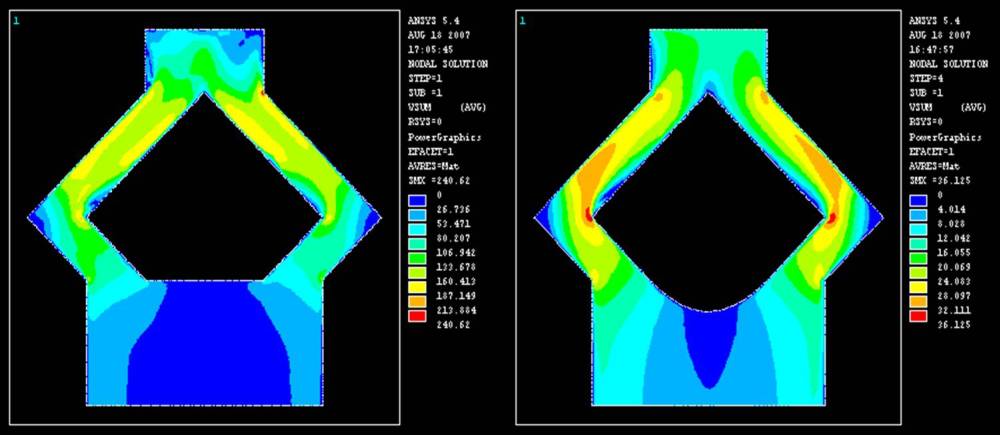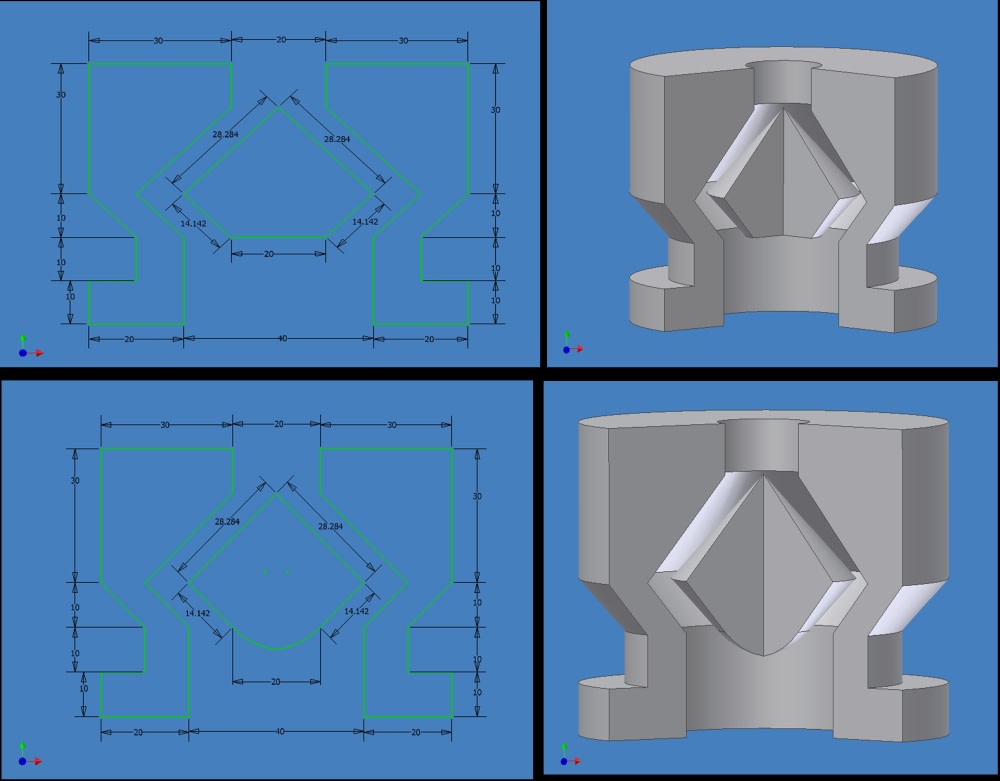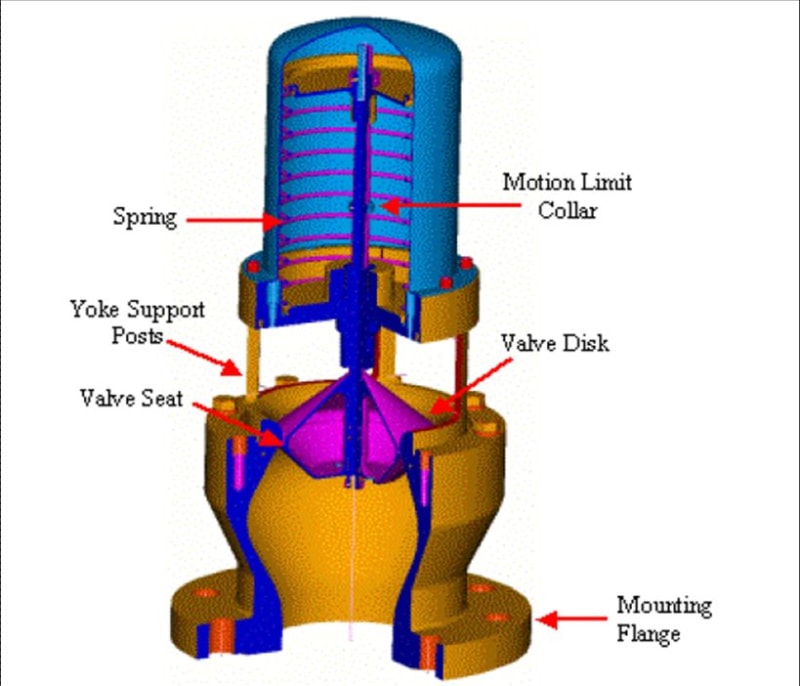(Study to Improve the Target Rock Relief Valve Using CFD-ANSYS Software Package)
Introduction:
Nuclear power plant emergency cooling systems serve the essential purpose of providing cooling for the reactor core in the event of failure of normal cooling systems. The most severe form of failure is a loss of coolant accident in which a pipe rupture causes a breech of the primary containment system. In this case, the function of emergency cooling systems is to provide as high a flow rate and volume of water as possible to the core to prevent fuel element damage. A common source of water for emergency cooling is on-site fresh water storage tanks. The large flow rate of water from the storage tanks during emergency cooling draws a vacuum within those tanks.
Modern nuclear power plant storage tanks are generally structurally optimized for internal pressure, water weight and postulated earthquake loadings using finite element analysis (FEA) techniques.
Valve shape:
The Target Rock vacuum relief valve is a reverse seated, spring loaded valve that opens when the differential pressure between the air outside the tank and inside the tank exceeds a
set pressure.
The valve consists of a body that bolts to a flanged opening on the top of a water storage tank. The disk is located below the valve seat. The valve is held closed by a spring that acts against the top of the valve stem.
Operation:
This results in lighter weight and lower cost tanks. The consequence of this optimized design is that the tanks have less margin that can be relied upon to provide a factor of safety for off-design conditions. For these optimized tanks, buckling under evacuated conditions is a real possibility. Rather than modifying the structural design for evacuated operation, tank manufacturers equip the tanks with one or more vacuum relief valves. The vacuum relief valves must pass a flow rate of air that is sufficient to prevent the pressure in the tank from decreasing beyond a fixed level that was used in the structural design of the tank.
My New Aerodynamic Shape:
After detailed study of paper (Coupled Fluid-Structure Interaction Simulation of the Opening of the Target Rock Vacuum Relief Valve) and the redesign done by Alton J. Reich and Alex DiMeo, I found their results can be improved more (wake and circulation reductions) by applying a new shape design which I verified using ANSYS/Fluid Flow Simulation and Autodesk Inventor.
The Results:
The results show the velocity distribution in both the old redesign and the present redesign valve. It can be shown easily that the wake and vortices in the present idea of design is better than the old one.
Conclusion:
The present redesign show the wake and circulation behind the valve's body had been reduced dramatically, which means better efficiency in service.
So my modified design will serve machinery, equipment, safety and security.
Like this entry?
-
About the Entrant
- Name:Ahmad Jasim
- Type of entry:individual
- Software used for this entry:CFD-ANSYS Software
- Patent status:none








